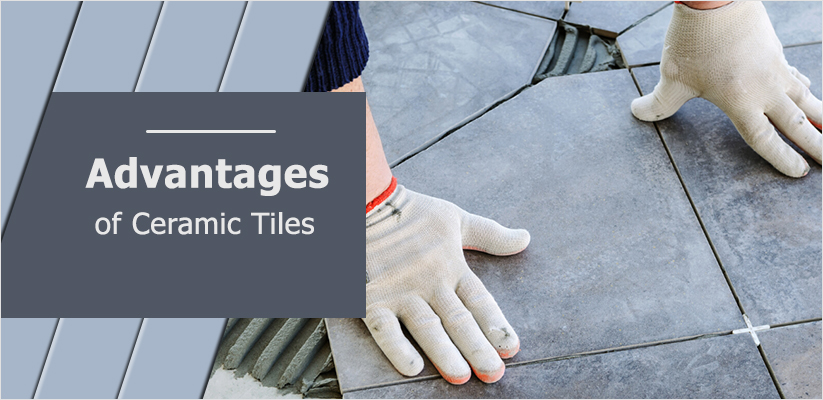ceramic tiles
Ceramic tiles have been an essential part of human architecture for thousands of years, adorning our living spaces with their timeless beauty and practicality. Whether used as flooring, wall coverings, or decorative elements, ceramic tiles have proven to be a versatile and durable choice. Ceramic tiles are versatile and durable flooring and wall covering materials. They are made from a mixture of clay, minerals, and water, which is shaped into tiles and then fired in a kiln at high temperatures to harden them. Ceramic tiles come in various shapes, sizes, colors, and designs, allowing for endless possibilities in interior and exterior design.
In this blog, we’ll delve into the various types of ceramic tiles, explore their applications, and analyze their advantages and disadvantages to help you make informed decisions for your home or project.
Types of Ceramic Tiles:
These tiles are fired at higher temperatures, resulting in denser and less porous tiles, making them highly water-resistant and suitable for both indoor and outdoor use.
Coated with a layer of liquid glass, these tiles come in various colors and designs, making them popular for decorative purposes.
Known for their earthy tones and rustic appeal, terracotta tiles are made from clay and are perfect for creating a warm ambiance in living spaces.
Made from shale or natural clay, these tiles are unglazed and are often used for heavy-duty flooring in areas with high foot traffic.
Tiny ceramic pieces assembled together to create intricate designs, mosaics ideal for adding artistic touches to walls, backsplashes, and floors.
Advantages of Ceramic Tiles
Ceramic tiles are highly durable and resistant to wear and tear, making them suitable for high-traffic areas in both residential and commercial spaces. With proper care, they can last for many years.
Glazed ceramic tiles, especially porcelain tiles, have excellent water resistance. This property makes them ideal for use in areas prone to moisture, such as bathrooms, kitchens, and outdoor spaces.
Ceramic tiles are relatively easy to clean and maintain. Regular sweeping and occasional mopping are usually sufficient to keep them looking clean and attractive.
With a wide range of colors, patterns, and designs available, ceramic tiles offer endless possibilities for interior and exterior design. They can complement various decor styles, from traditional to modern.
Unlike carpets, ceramic tiles do not trap dust, pollen, or allergens, making them a healthier flooring option for people with allergies or respiratory issues.
Ceramic tiles are non-combustible, which means they do not burn or emit harmful fumes when exposed to fire, enhancing the safety of the space they cover.
-
Environmentally Friendly:
Ceramic tiles can be made using natural materials, and some options can contain recycled content, making them an eco-friendly flooring choice.
Disadvantages of Ceramic Tiles
While ceramic tiles are durable, they can be brittle and prone to cracking or chipping if a heavy object is dropped on them or if they are subjected to significant impact.
In colder climates or during the winter months, ceramic tiles can feel cold underfoot, making them less comfortable to walk on without heating systems or rugs.
Proper installation of ceramic tiles requires skill and precision, and it is essential to ensure a level surface to prevent unevenness or cracking over time.
The grout lines between tiles can accumulate dirt, stains, and mildew over time, necessitating regular cleaning and occasional resealing to maintain their appearance.
Some glazed ceramic tiles can become slippery when wet, posing a risk of slipping and falling, especially in areas like bathrooms and kitchens.
High-quality ceramic tiles, especially porcelain tiles, can be relatively expensive compared to other flooring options. However, their durability and longevity may justify the initial investment.
In rooms with hard surfaces, ceramic tiles can contribute to increased noise levels due to their reflective properties. Area rugs or sound-absorbing materials can help reduce this issue.
Applications of Ceramic Tiles
Ceramic tiles durability and ease of maintenance make them a popular choice for flooring in residential and commercial settings.
Their wide range of designs and colors allow ceramic tiles to be used as striking wall coverings and functional backsplashes in kitchens and bathrooms.
Porcelain tiles ability to withstand harsh weather conditions makes them suitable for patios, decks, and pool areas.
Mosaics and glazed tiles are excellent for creating stunning visual focal points and accents within a space.
Conclusion
Ceramic tiles have proven to be a time-tested choice for homeowners and designers alike. With their wide variety of types, applications, and design possibilities, they continue to be a staple in interior and exterior design. The advantages of durability, low maintenance, and water resistance outweigh their disadvantages, making them an excellent investment for any space. Whether you opt for classic porcelain, vibrant mosaics, or rustic terracotta, ceramic tiles will undoubtedly continue to grace our homes and public spaces with their enduring beauty for generations to come.
We have offers of these Glass Fittings & Hardware (Glass Connector, Glass Door Handles, Glass Door Hinge, Glass Door Locks, Patch Fittings) with high discount. You can choose multiple types of glasses from top brands.
Read the full article here














